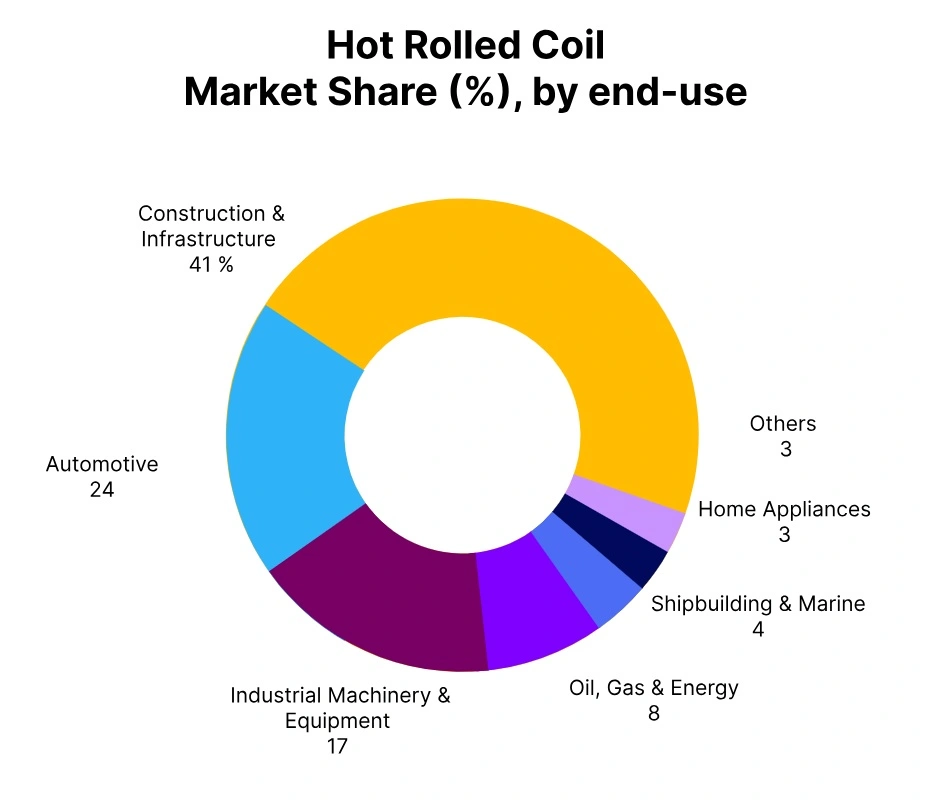Price-Watch’s most active coverage of Hot Rolled Coil (HRC) price assessment:
- S235JR 2-3mm FD Sheffield, United Kingdom
- A1011-1.8mm Ex Alabama, USA
- SS400 2.75mm FOB Shanghai, China
- IS2062 2.5-8mm Ex-Mumbai, India
- 08PS-3-5.2 mm FOB Black Sea, Russia
- SS330-1.7mm FOB Osaka, Japan
- S235JR 1.2-5mm EX Taranto, Italy
- S235JR 1.2-5mm EX Aviles, Spain
- S235JR 1.2-5mm EX Ruhr, Germany
- S235JR 1.2-5mm FOB Mersin, Turkey
- SS400 2.75mm CIF Santos (China), Brazil
- SS330-1.7mm CIF Laem Chabang (Japan), Thailand
- SS400 2.75mm CIF Hai Phong (China), Vietnam
- SS400 2.75mm CIF Klang (China), Malaysia
- SS400 2.75mm CIF Tanjung Priok (China), Indonesia
- SS400 2.75mm CIF Jebel Ali (China), United Arab Emirates
- SS400 2.75mm CIF Jeddah (China), Saudi Arabia
- IS2062 2.5-8mm EX-NCR Delhi, India
- IS2062 2.5-8mm EX-Chennai, India
- IS2062 2.5-8mm EX-Kolkata, India
Hot Rolled Coil (HRC) Price Trend Q3 2025
During Q3 2025, Hot Rolled Coil (HRC) pricing across the main global markets has generally been flat, impacted by weakening demand from manufacturing, stable raw material costs, and increasing import competition. The single exception has been China, which recorded a slight quarterly increase driven by consumption related to infrastructure spending, all other markets suffered declines, including India, the USA, and the UK, all amid weak industrial activity and hesitant buying behavior.
Hot rolled coil (HRC) demand sentiment remained weak as buyers continued to postpone restocking, and mills focused on maintaining market share instead of improving pricing, which ultimately led to a relatively soft tone for the global HRC market through the quarter.
China
Hot rolled coil (HRC) Export prices FOB Shanghai, China, Grade- SS400 2.75mm.
According to Price-Watch, the Hot rolled coil (HRC) price trend in China rose by 0.56% in Q3 2025, reflecting a mild recovery supported by stronger demand from infrastructure projects and steady consumption in machinery manufacturing. Government-backed investment initiatives in public works offered some stimulus to the steel market, while targeted production cuts by leading mills prevented excessive oversupply.
However, the upside was capped by persistent weakness in exports as global buyers scaled back orders amid economic uncertainties, along with stable raw material prices that limited cost-driven increases. Hot rolled coil (HRC) prices in China fell by 1.1% in September 2025 as seasonal demand slowed, especially from construction and shipbuilding sectors, while mills kept output levels steady, creating localized oversupply and pressuring spot offers.
India
Hot rolled coil (HRC) Domestic prices EX-Mumbai, India, Grade- IS2062 2.5-8mm.
According to Price-Watch, in India, the price trend of Hot Rolled Coil experienced a significant decline of 3.50% during Q3 2025 due to waning demand from automotive, engineering and appliance sectors. The sharp price drop has been exacerbated by increased low-cost imports from Asia which further put pressure on domestic producers, forcing domestic mills to cut prices in order to protect their market share.
A healthy availability of feedstock and steady production rates provided a lack of supply side support while buyers remained very cautious when it came to purchasing which translated into a drop in order entry. Infrastructure demand remained firm however inadequate to offset the weakness seen in manufacturing as a whole.
A slight 0.5% fall has been registered in Hot Rolled Coil prices in India for the month of September 2025 as buyers delayed making purchases in anticipation of prices declining further. Producers have been forced to prioritize sales volume and have had to accept firm pricing but in a very weak pricing environment.
United States
Hot rolled coil (HRC) Domestic prices EX Alabama, USA, Grade- A1011-1.8mm.
The Hot rolled coil (HRC) price trend in the USA slipped by 0.86% in Q3 2025, influenced by a slowdown in manufacturing activity and softer demand from the construction sector. Service centers reported higher inventory levels, which limited new buying requirements and prompted price adjustments. Input cost relief from lower scrap and ore prices added to the downward trend, while competition from imported material restricted domestic producers’ ability to hold firm prices.
Hot rolled coil (HRC) prices in the USA declined by 0.3% in September 2025 as subdued order activity from distributors and OEMs persisted, with buyers opting for short-term deals to reduce inventory exposure amid a cautious economic outlook.
United Kingdom
Hot rolled coil (HRC) Domestic prices FD Sheffield, UK, Grade- S235JR 2-3mm.
According to Price-Watch, The Hot rolled coil (HRC) price trend in the UK fell by 1.80% in Q3 2025, driven by weaker demand from automotive and construction sectors along with soft purchasing activity from distributors. Competitive import offers from European mills targeting the UK market further pressured domestic prices, as local producers struggled with margin constraints due to high operating costs.
Export sales were limited by unfavorable currency movements and weak foreign market activity, adding to the domestic oversupply. Hot rolled coil (HRC) prices in the UK eased by 0.1% in September 2025 as demand remained steady but muted, with buyers controlling procurement volumes to avoid inventory buildup ahead of uncertain market conditions in Q4 2025.












